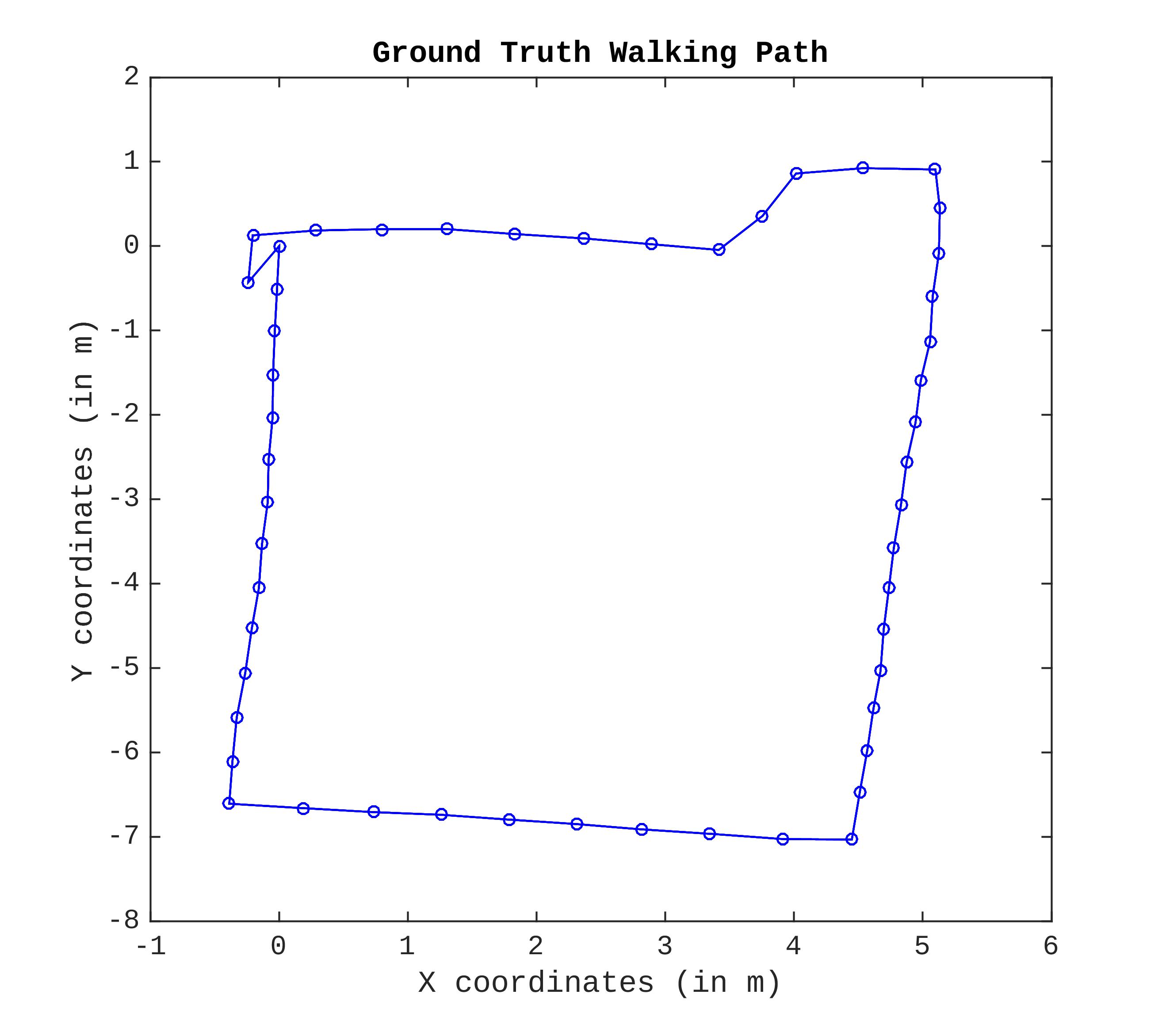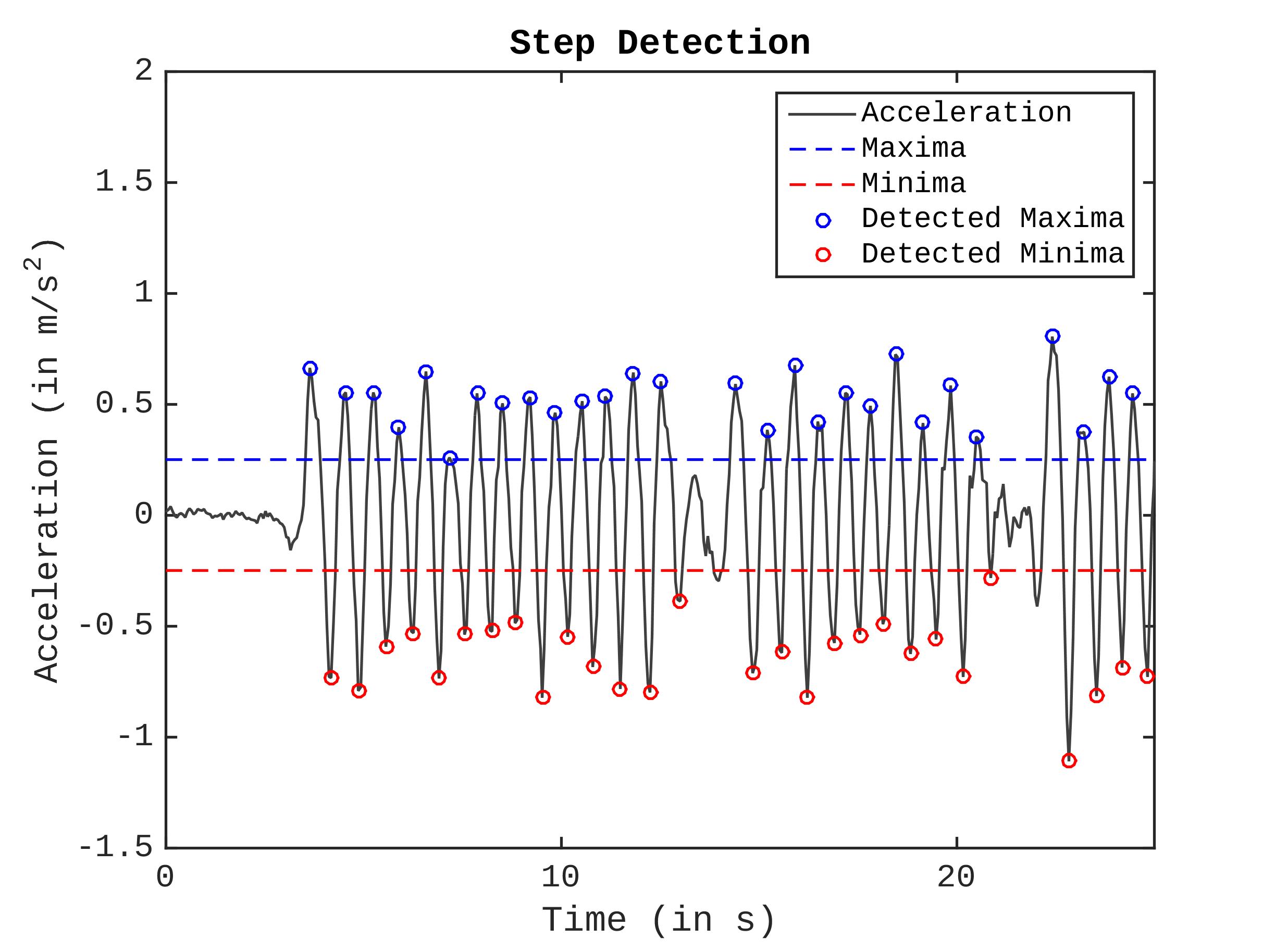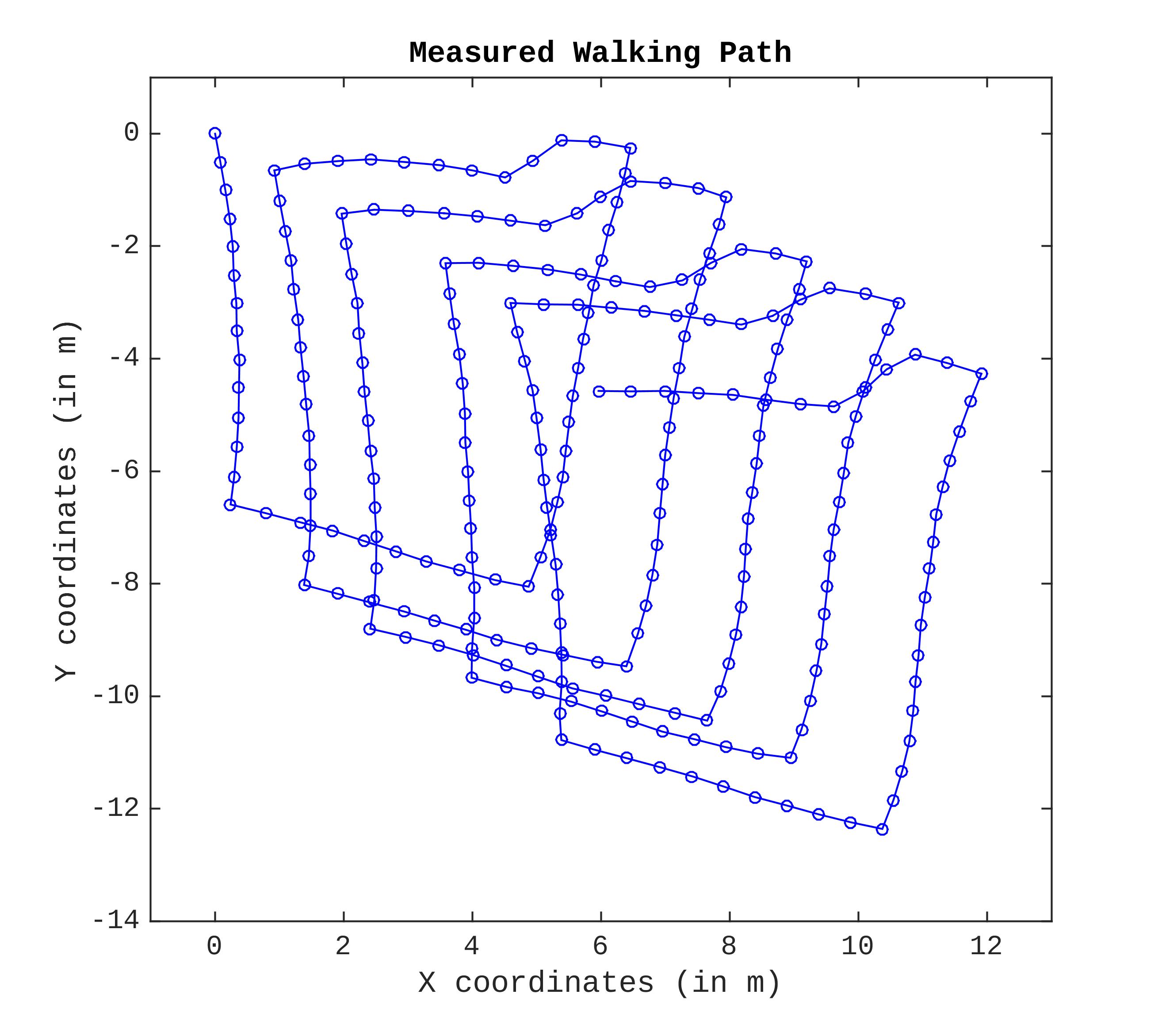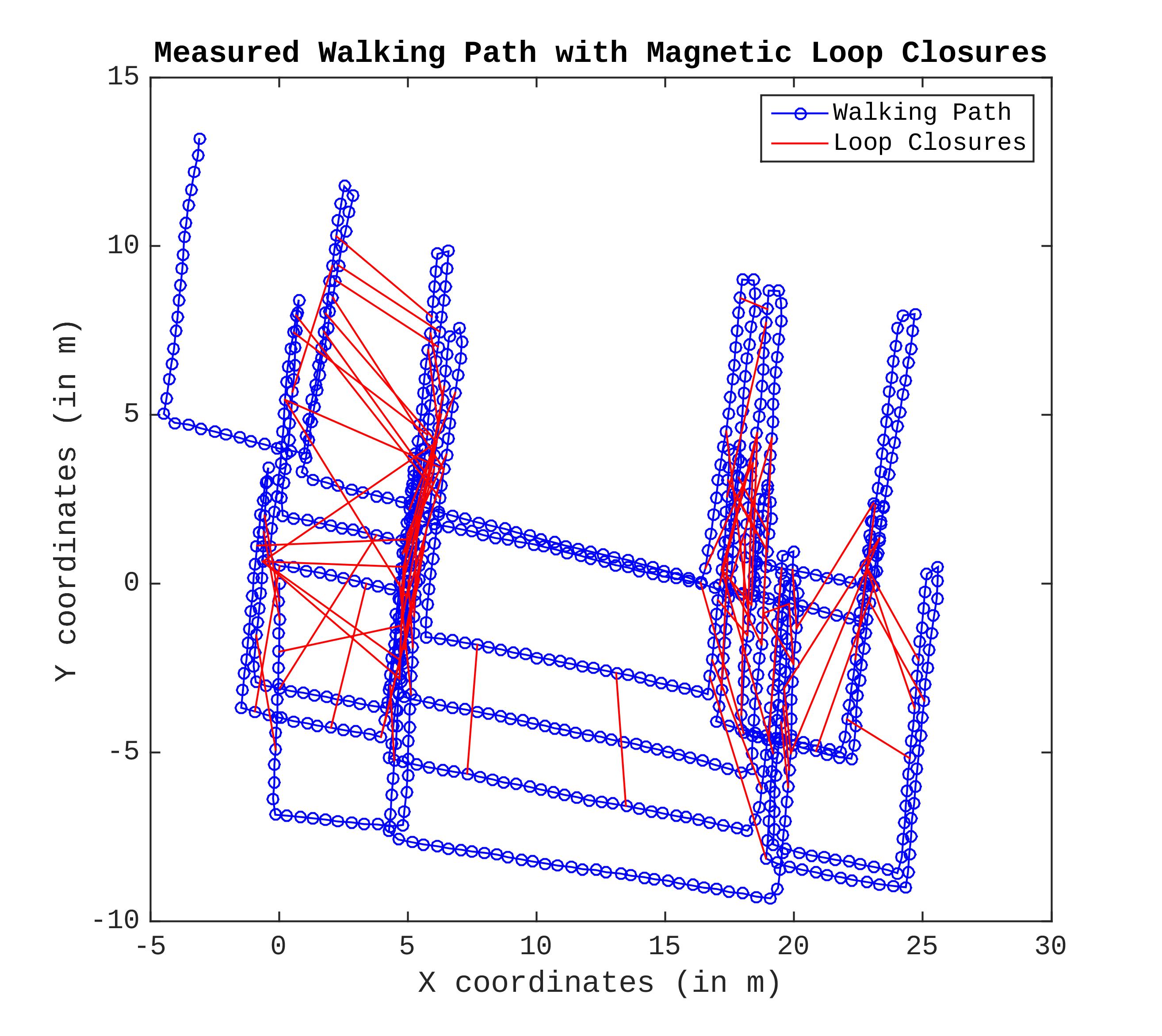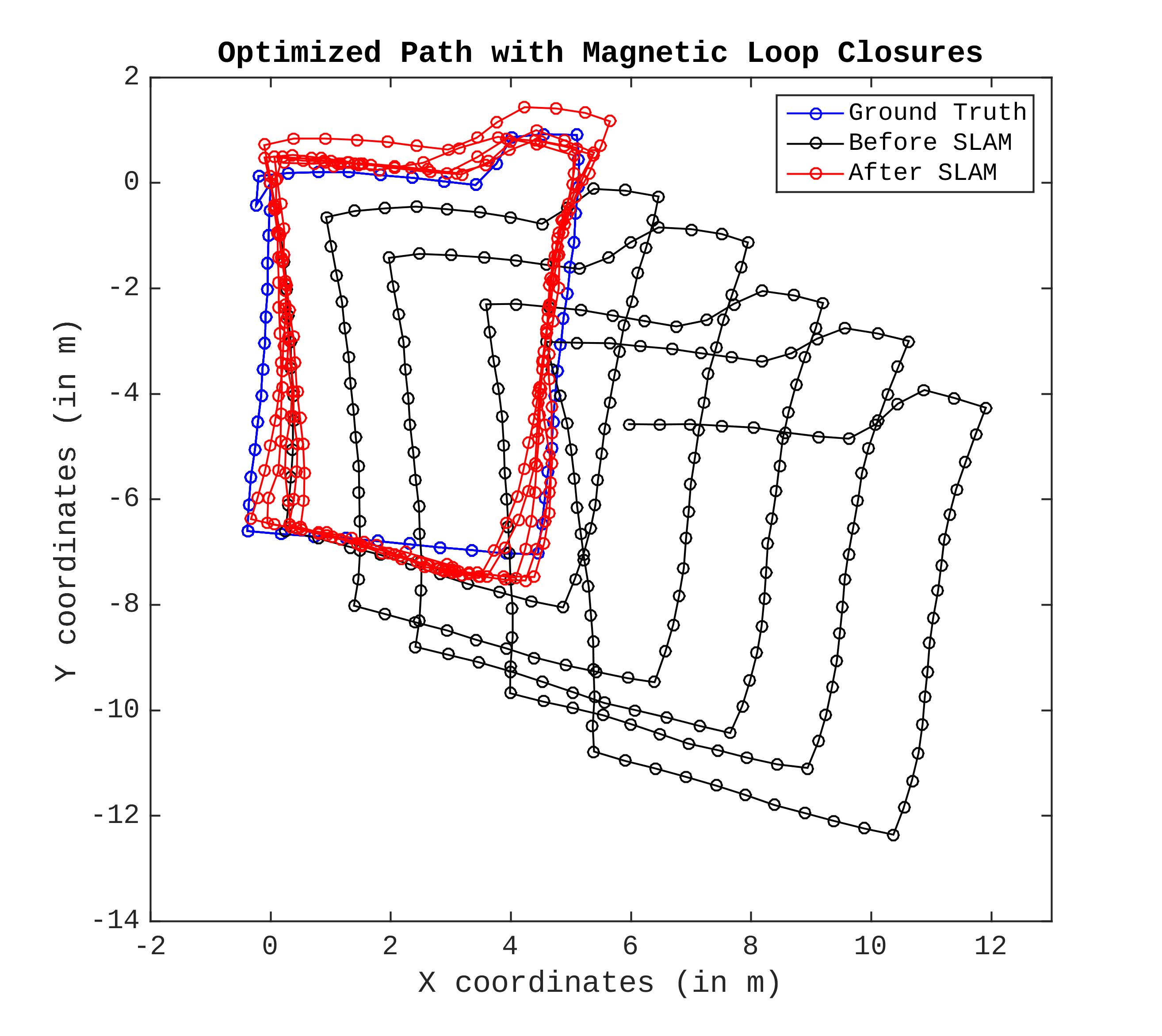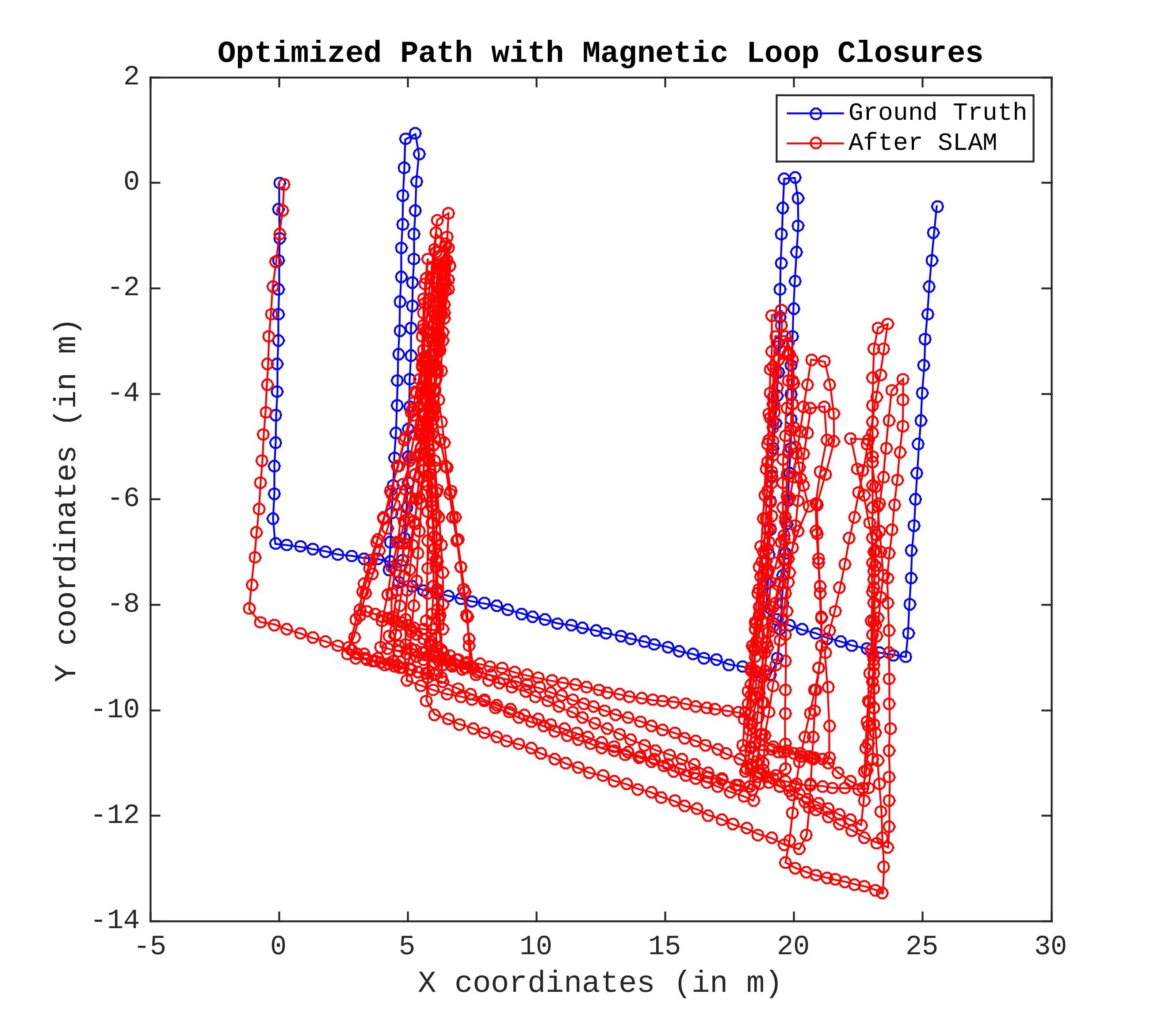This repo contains the matlab source codes of the Robust Graph-SLAM implementation. There are many robust method but this one is inspired by a method called Switchable Constraints developed by Sünderhauf, N.
For further details of the application, I refer readers to the report.
The indoor positioning application
with smartphones is a challenging problem
because an average commercial smartphone has
no specialized hardware solution yet.
Therefore, one has to exploit the
existing technologies; such as inertial sensors, signal strength
measurements or camera. Since many of these technologies are not
designed for the positioning purposes, hybrid systems are needed to
compensate each other's drawback. One of the straightforward method
is to build a radio map, composed of
RSSI
that can be acquired from Wi-Fi or ble,
where you
create grid-based maps with the unique fingerprints. Downside of
the fingerprinting is that it requires system owners to build the
radio map. The easiest way to build this map is to store
the signal strength measurements by standing at the reference
positions.
However, this solution does not scale to the big buildings.
To make
this radio mapping process efficient,
we proposed Graph-based SLAM
approach in this research paper.
With RSSI, one can collect the measurement during walking.
On the contrary, the problem gets more complicated as we have to
track the user's walking path while mapping.
To tackle this problem, we first lay out
the general SLAM problem, which is well-known in robotics domain.
Then, we transform the problem formulation to smartphone
application since we don't have such rich sensing capabilities like
robots in smartphones. By using this transformed SLAM algorithm, we
compare Wi-Fi, BLE, and Magnetic Field sensors in the context
of loop closure. As a consequence of this comparison, we find out
that the
Magnetic Field sensor is a valid candidate for place recognition
by using the proposed simple dissimilarity function.
Finally, we present the recovered walking path results.
This algorithm detects the steps using accelerometer in the phone.
Drifted measured walking path results.
